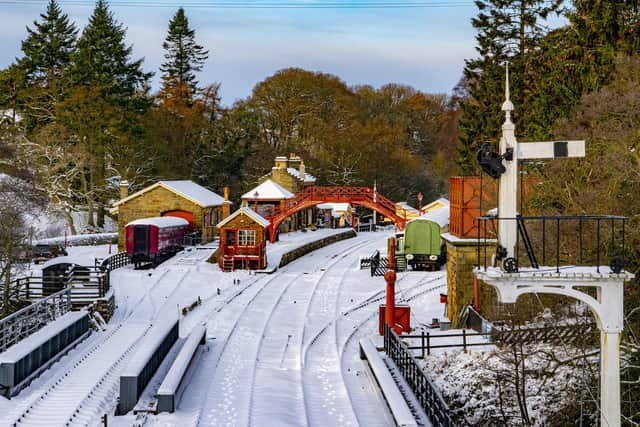North Yorkshire Moors Railway repositioning itself as 'Beamish-style living history museum' as cost of running trains rises
The railway’s chairs, Simon Brockington and Mike Brierley, have outlined plans for changing its offer in the winter edition of the supporters’ magazine Moors Line.
Recruitment of volunteers to fill public-facing meet and greet roles, which involve dressing in period costume to tell the line’s story, has already started.
Advertisement
Hide AdAdvertisement
Hide AdThe NYMR has faced a difficult few years due to Covid lockdowns and increasing costs. Sourcing coal has become more difficult since the war in Ukraine and a new variety locomotives used last summer caused a number of lineside fires, leading to steam services being withdrawn for safety reasons.


Yet managers of the attraction believe that its future could lie in the large numbers of people who visit its stations to watch train movements rather than travel on board services.
They have cited County Durham museum Beamish, which has recreations of Victorian and Edwardian streets and shops staffed by actors, as the model of inspiration.
In the article, the chairs confirm that although ticket sales remain similar to 2019 levels, increases in prices of coal, wood, metal and electricity has meant the operation of the railway itself has become loss-making. It previously made a significant contribution to the overall asset. They added that they ‘urgently’ needed to find other ways of supporting the maintenance and investment programme.
Advertisement
Hide AdAdvertisement
Hide AdGeneral manager Chris Price and his team have ‘gone back to the drawing board’ to plan timetables, locomotive provision and fare levels but it has become ‘absolutely clear’ to management that ‘selling tickets to ride on the line, with income supplemented by Pullman dining trains, is not going to be enough. We must do something different, or additional to improve our offer and bring in funds’.
The article continues: “We’ll always be a heritage railway, but we are learning that we have to do more than just maintain and operate the railway. Success will lie in the way we offer and interpret our heritage, as well as the volunteer experience that goes with it. One obvious solution is to see the NYMR for what it is – a living museum. Living museums create an experiential interpretation of history and one example is Beamish. They recreate culture, history and heritage together, and bring it to life through real people.
"A vision such as this may seem far-fetched just now, but in many ways we’re already part-way there. Many of our volunteers dress in period costume already, and seeing station-masters and guards is part of the theatre of coming to the NYMR. A crowd always gathers when a locomotive enters a station, almost desperate to learn more about what they’re looking at. All that is missing are the stories about times gone by and the experience would be complete.”
A second article details the work of the new visitor engagement team, based at Pickering Station, who have been tasked with ‘breaking down barriers’ and developing new ideas based on changing visitor needs and expectations. Their volunteers will answer questions, tell stories and lead engagement sessions and workshops.
